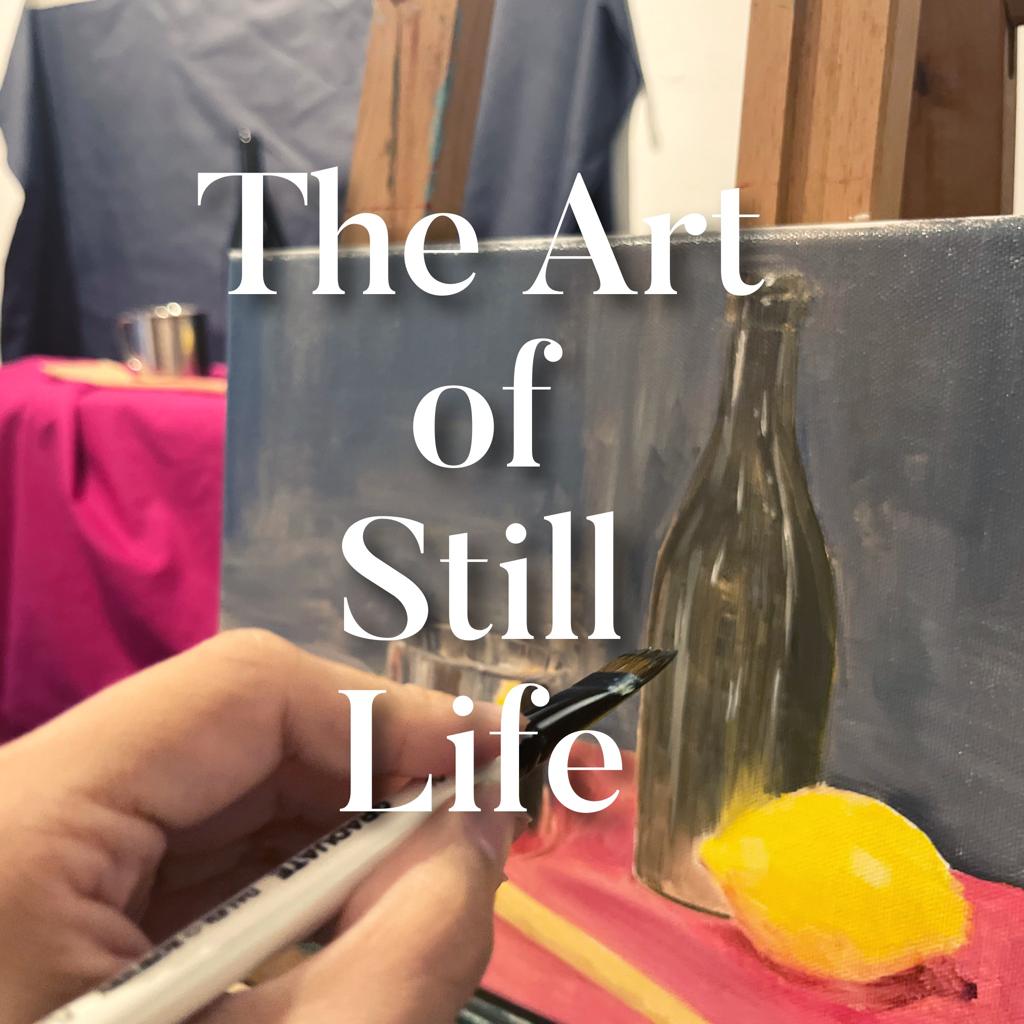
The Art of Still Life

Fig 1. Still Life with Glass Bowl of Fruit and Vases, a 1st-century wall painting from Pompeii
Dating as far back as 15th century BCE, still life paintings can be seen on the walls of Egyptian tombstone. In the walls of Pompeii believed to have been painted between 63-79CE, revealed the food, vessels of the Roman culture in those times.
From Dutch floral Paintings in 1600s where flowers were seen as the main subject matter to still life of everyday objects, Artists over the centuries continue to explore this genre of Art. What is so special about Still Life painting that mesmerizes Artists all over the world to dabble and explore in this genre?
What is Still Life Painting?
Still Life in French means nature morte which represents inanimate objects such as fruits, flowers and everyday items. The term ‘Still Life’ is derived from the Dutch ‘stilleven’, which popularized during the 17th century where Artists began to create still life paintings with different subject matter.

Fig 2. Flowers in a Wooden Vessel by Jan Brueghel the Elder (Oil on Wood) 1606/1607
Flowers in a Wooden Vessel is an Oil painting done by Jan Brueghel the Elder in 1606/1607 commissioned by the Archbishop of Milan. It takes on the Flemish flair of perfection in floral paintings.

Fig 3. Quinces, lemons, pears and grapes by Vincent Van Gogh 1887
Likened to the Starry Night where Vincent Van Gogh used thick paint strokes, this painting of still life quinces, lemons, pears and grapes is evident of his own signature way of approaching textures.

Fig 4. Still Life: Fruits and Pitcher by Pablo Picasso 1939
Pablo Picasso, the Father of cubism and the inspiration behind abstract and modern Art, cleverly painted a still life painting far beyond the old masters.
In every generation, we see different approach in Still Life paintings. From the realistic Flemish paintings to post-impressionist Vincent Van Gogh signature thick strokes to Pablo Picasso & Paul Cezanne’s own stylized approach toward Still Life. One can see how much transformation and creativity one can achieve through this one-single genre – Still Life.
Why should one learn Still Life Painting?
As shared in our previous blogpost on En Plein Air painting, paints were only made readily available in tubes since the impressionist period. Prior to that, Artists had to mix and grind their own paints from pigments bought from Art stores to create their work indoors. Due to the flexibility to control and adjust the lighting in their studios, painting indoors became a beautiful place for mastery of skills and techniques for Artists.
Indoor still life allows one to have greater control over lighting and the arrangement of items and one does not have to be concerned throughout the day how the object might change colour or temperature due to the lighting conditions outdoor.
Where can I learn Still Life Painting to hone and grow my skills in painting?
At LACA, a SG-based Art Academy, one can find professional instructors who have delved deep in painting. One can find satisfaction and fulfillment in their works throughout the course of the Oil Painting program. This course has proven to help multiple students from hobbyists to university undergraduates, Art teachers, young aspiring Artists.
Keen to find out more?
Head on to this link to register a slot for you and your friends:
https://www.laca.sg/products/oil-painting-beginner
Bibliography
Kelly Richman Abdou. (12 March, 2022). Retrieved from My Modern Met: https://mymodernmet.com/what-is-still-life-painting-definition/
Art in Context. (23 March, 2022). Retrieved from https://artincontext.org/still-life-painting/


Hi laca.sg admin, Your posts are always well-written and easy to understand.
Kaylee Blaubaum on
To the laca.sg webmaster, Keep up the great work!
Aracely Lawler on
Administrasi Bisnis on
Nice selection ! In sharing, french artist, I invite you to discover my series of drawings in progress: “Vanity”, of which the IPCC report is at the origin : https://1011-art.blogspot.com/p/vanite.html
1011-art on